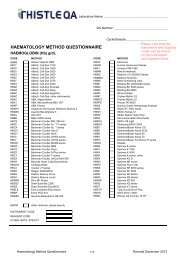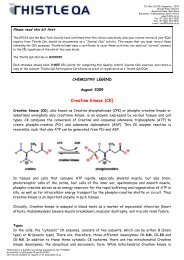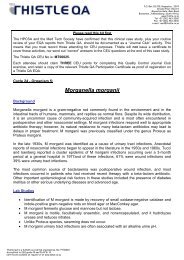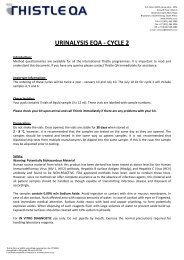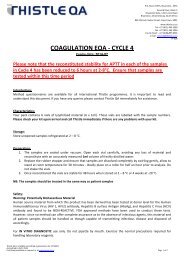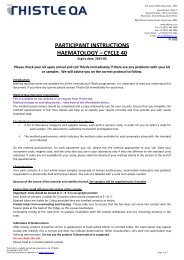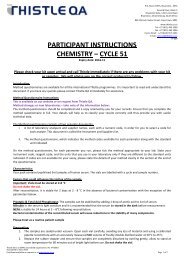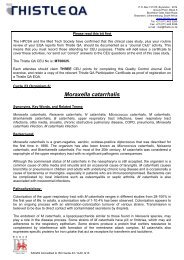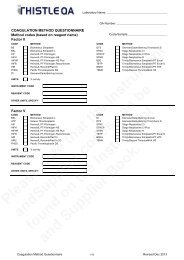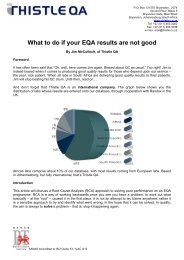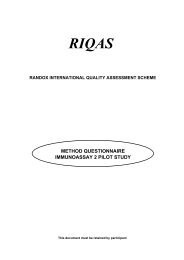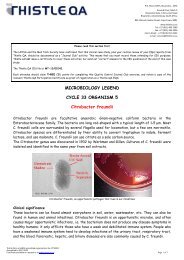MQP â 014 EQA HANDBOOK EDITION 6 A participant ... - Thistle QA
MQP â 014 EQA HANDBOOK EDITION 6 A participant ... - Thistle QA
MQP â 014 EQA HANDBOOK EDITION 6 A participant ... - Thistle QA
You also want an ePaper? Increase the reach of your titles
YUMPU automatically turns print PDFs into web optimized ePapers that Google loves.
P.O. Box 131375, Bryanston, 2074<br />
Ground Floor, Block 5<br />
Bryanston Gate, 170 Curzon Road<br />
Bryanston, Johannesburg, South Africa<br />
804 Flatrock, Buiten Street, Cape Town, 8001<br />
www.thistle.co.za<br />
Tel: +27 (011) 463 3260<br />
Fax: +27 (011) 463 3036<br />
Fax to Email: + 27 (0) 86-557-2232<br />
e-‐mail : service@thistle.co.za<br />
<strong>MQP</strong>-‐<strong>014</strong><br />
Edition 10<br />
b) These analytes are monitored at Management Review and will be<br />
discontinued after consideration by AdCom within stipulated time<br />
frames.<br />
How do I use this information<br />
The following advice applies to all <strong>E<strong>QA</strong></strong>s except Microbiology, Differential<br />
Slides, HbA1C and Serology.<br />
Our reports can show the following situations.<br />
1. Your result is classified as Poor and is outside 2 SDs. This is the worst<br />
possible case and means that you are in the worst 5% of performers AND<br />
your result is not within the Clinical Limits as specified by CLIA’88.<br />
Clearly this needs action, which we discuss later in this Handbook.<br />
2. If you are outside 2 SDs with either an Acceptable or Ideal<br />
classification, it means that you are in the worst 5% of performers BUT<br />
your result is within the Clinical Limits. You may not like being in the<br />
worst 5%. However, although this is still a problem worth noting and<br />
monitoring at least, it is obviously less serious than No. 1.<br />
3. If your result is classified as Poor but you are within the 2 SDs, the<br />
opposite applies. You are not in the worst 5% of performers BUT you are<br />
outside the Clinical Limits. How can this happen It means that more<br />
than 5% of performers fail the Clinical Limit, in other words, you are not<br />
alone.<br />
Perhaps your method itself shows a bias or imprecision problem (ask and<br />
we’ll do a query for you), or that the methodology is not good enough for<br />
clinical purposes. This is sometimes the case with certain analytes which<br />
are under tight homeostatic control in the human body, such as calcium,<br />
and thus clinicians use small serial changes in results to confirm<br />
therapeutic efficiency.<br />
As a rule of thumb, category No. 1 is where to apply your attentions, at least to<br />
begin with. Thereafter, other problems become important.<br />
Page 9 of 12



